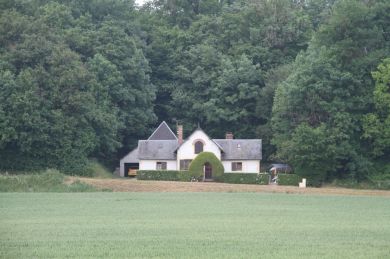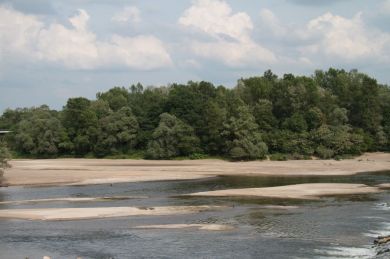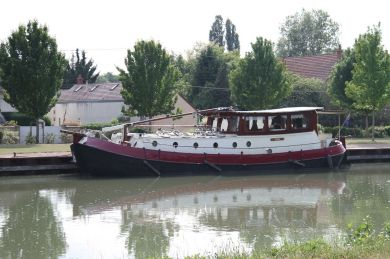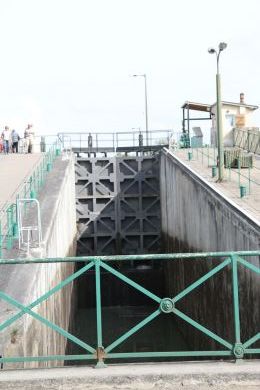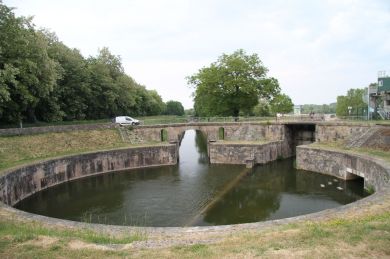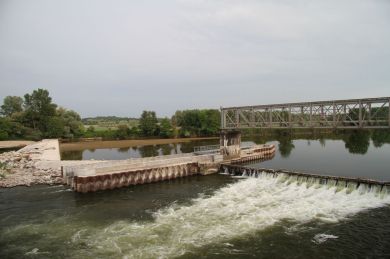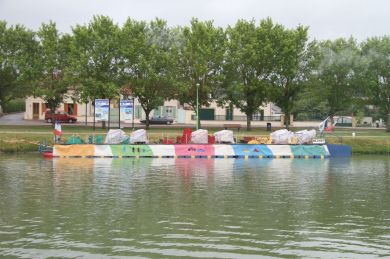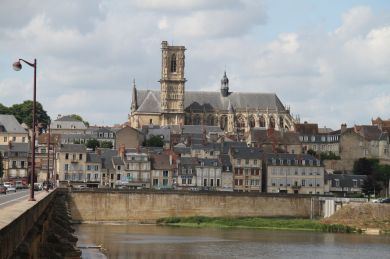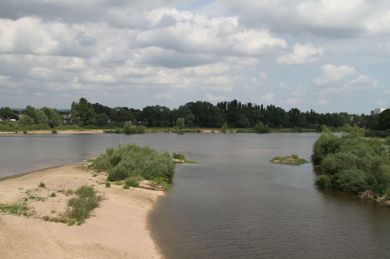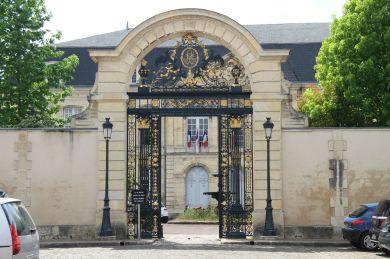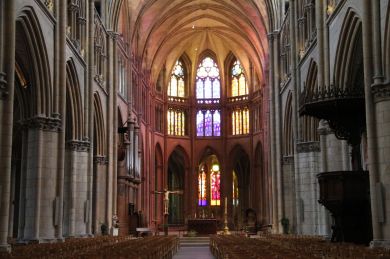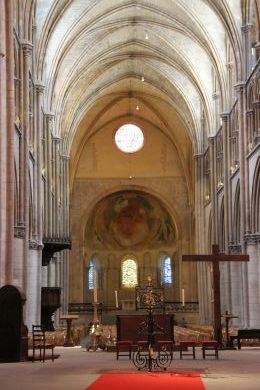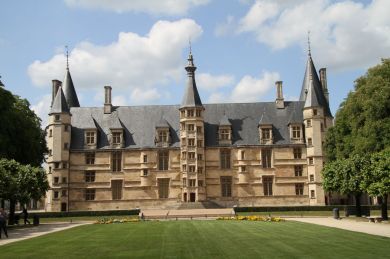Nevers
Before we had consumed too much of the bottle of wine, we decided to take advantage of the long twilight to ride to an unusual circular lock. This is on the disused Lorrains Branch of the canal which used to allow entrance from the Allier River. The lock is 32 metres in diameter, with three gates. A boat would enter at one gate, and be turned around to exit in a different direction. A barge could almost turn back on itself to make a 330 degree turn if required.
We were pleased to have had the chance to get our minds and our lines in order for the Guetin staircase lock, with one rise of six metres, one of four metres. We needed longer lines than we have used before to reach the bollards which are 10 metres higher than the boat, and set well away from the lock wall. Fortunately the lock- keeper dangles a hook over the side so that the lines can be sent up that far. There would be no chance of reaching the bollards otherwise.
With two large barges in the lock both of us were very close to the lock gates, so it was important to keep the lines firm as we rose. Indeed, until the lock gates were closed, we only had about 30cm between our bow and the stern of the boat in front, plus there was about 30cm space for the gates to close behind us. Once the gates were closed, there were an extra couple of metres, so we could slide back a little.
All went well and we exited onto a narrow 340 metre aqueduct over the Allier River. David steered very straight again. After this the tension was over. The Canal Lateral a la Loire has very few locks for its length, with one on average every 5 kilometres, compared with the Briare Canal which has one every 1.7 k. After the hard work of the Guetin lock, there is a 20.7 kilometre pound (stretch between locks) so we could sit back and enjoy the countryside, with some beautiful farming country and attractive cottages. Ten kilometres along, we turned onto a branch canal to reach Nevers, the capital of the Nivernais district (Nievre Department) and soon tied up at the Port. The branch canal used to join the Loire (on which Nevers is built) but is now closed, and a huge swimming pool has been built into the end of the old canal and last lock.
Nevers has many of the features we have become used to- several churches, two dating back to the 11th Century, a ducal palace and ancient town walls and gates. When we visited the Cathedral the huge Church organ was being tuned so David was interested to peer into the workings at the back (which was open). The stained glass windows in the Cathedral are very modern, as the originals (and parts of the building) were destroyed by a mis- directed Allied bombing raid in 1944. There is a beautiful and ancient ceiling fresco which escaped the bombs and is in excellent condition.
St Bernadette, whose name is linked more with Lourdes, actually spent much of her life, and died, here in Nevers where she joined the Convent of the Sisters of Charity of Nevers. Her naturally preserved body is in the Chapel of the Convent and we saw it. Amazing.
Nevers is also noted for beautiful ceramics whcih have been manufactured here since the 16th century. The work is exquisite. While in the Port at Nevers the final coat of white paint has been applied to our new roof, and the panels in the engine room are all back in place after David's on- going improvements to Anja's electricity generation capacity. This has meant that tools and odd bits of wood are now back in their rightful place so we are much more shipshape. Nevers has also given us our first rainy day, with the temperature hovering around 15 degrees outside, very conducive to turning on the central heating and relaxing.
Pictures attached here show the following (but not necessarily in this order!)
Spring flowers, Ducal Palace, Nevers Cathedral, Palais du Justice, Tower Goguin, Nevers Township, the Allier River and also the Loire, Round Lock, Guetin Lock, us at Guetin, pretty farm house and a barge powered by legs and arm muscles.
Best Regards,
Penny and Dave
